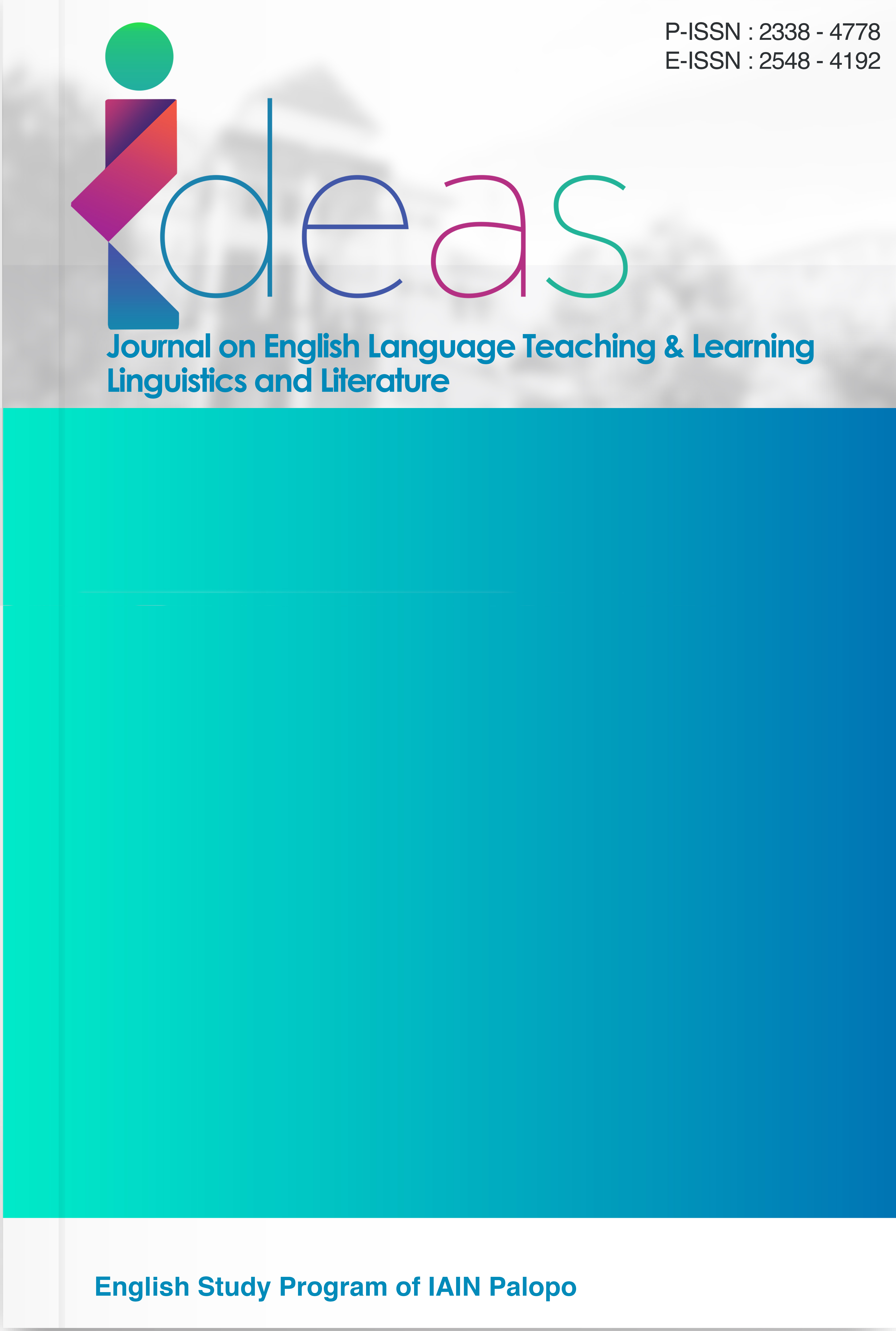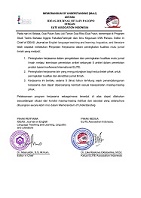Examining the Impact of Emancipated Curriculum on EFL Teachers’ Creativity in Lesson Planning and Teaching Practice at Vocational High School, Semarang Regency, Central Java
DOI:
https://doi.org/10.24256/ideas.v13i2.6870Keywords:
Emancipated Curriculum, EFL teachers, creativityAbstract
This study examines how English as a Foreign Language (EFL) teachers at SMK Negeri 1 Pringapus design and implement creative teaching practices under the Emancipated Curriculum (Kurikulum Merdeka), utilizing Torrance's (1962) framework of creativity, which encompasses fluency, originality, elaboration, and flexibility. Employing a qualitative single-case study design, data were collected through interviews, classroom observations, and analysis of lesson plans from three EFL teachers with varying backgrounds. Thematic analysis revealed that the Emancipated Curriculum provides significant space for teacher autonomy and creativity, particularly in differentiated instruction, integration of digital tools, and student-centered activities. However, the level of curriculum alignment and creativity varied among teachers, influenced by their pedagogical readiness and openness to innovation. Teachers who embraced differentiated strategies and technological tools demonstrated higher levels of creative fluency and flexibility, while others maintained conventional approaches with limited adaptation. These findings indicate that while the Emancipated Curriculum has the potential to foster innovation, effective implementation requires ongoing professional support. The study offers insights into the critical role of teacher agency and reflective practice in realizing meaningful curriculum transformation.
References
Arifin, Z., & Saputra, D. (2023). Challenges in implementing project-based learning in vocational schools. Jurnal Pendidikan Vokasi, 13(1), 55–66. https://doi.org/10.21831/jpv.v13i1.54321
Beghetto, R. A. (2007). Creativity in the classroom. Cambridge University Press.
Bani, M., & Masruddin, M. (2021). Development of an Android-based harmonic oscillation pocketbookfor senior high school students. JOTSE: Journal of Technology and Science Education, 11(1), 93-103.
Cahyono, B. Y., & Rahman, M. A. (2023). Fostering 21st-century skills through Emancipated Curriculum implementation. TEFLIN Journal, 34(1), 25–44. https://doi.org/10.15639/teflinjournal.v34i1.25-44
Craft, A. (2005). Creativity in schools: Tensions and dilemmas. Routledge.
Jeffrey, B., & Craft, A. (2004). Teaching creatively and teaching for creativity: distinctions and relationships. Educational Studies, 30(1), 77–87. https://doi.org/10.1080/0305569032000159750
Creswell, J. W., & Poth, C. N. (2018). Qualitative inquiry and research design: Choosing among five approaches (4th ed.). SAGE Publications.
Hidayat, D., Widodo, H. P., & Yuliana, S. (2023). Redesigning EFL learning under the Merdeka Curriculum. Indonesian Journal of English Language Teaching, 18(2), 98–115. https://doi.org/10.24071/ijelt.v18i2.67890
Husnaini, H. (2022). Development of Self-Esteem-Oriented Micro-Teaching Materials for IAIN Palopo English Education Students. IDEAS: Journal on English Language Teaching and Learning, Linguistics and Literature, 10(1), 538-560.
Iksan, M., Husnaini, H., & Masruddin, M. (2022). Implementation of a weekly English program with a fun learning method for Pesantren students. Ethical Lingua: Journal of Language Teaching and Literature, 9(2), 872-879.
Ismail, I., & Masruddin, M. (2023). Implementation of Smart Pop-Up Book Media to Improve Read-Write Literacy in Children. IDEAS: Journal on English Language Teaching and Learning, Linguistics and Literature, 11(1), 864-869.
Kemendikbudristek. (2022). Panduan implementasi Kurikulum Merdeka. Kementerian Pendidikan, Kebudayaan, Riset, dan Teknologi Republik Indonesia.
Lestari, N. (2023). Teacher workload in the era of the emancipated curriculum: A qualitative inquiry. Jurnal Kependidikan, 21(2), 180–193. https://doi.org/10.21831/jk.v21i2.54322
Nation, I. S. P., & Macalister, J. (2010). Language curriculum design. Routledge.
Ningsih, R. (2023). Student readiness in independent learning: A case from Merdeka Curriculum implementation. Jurnal Ilmu Pendidikan, 29(1), 77–89. https://doi.org/10.24036/jip.v29i1.56789
Prasetyo, A. (2021). Teachers’ perception of autonomy in curriculum design: A shift to Merdeka Curriculum. Jurnal Pendidikan dan Kebudayaan, 11(3), 200–214. https://doi.org/10.24832/jpnk.v11i3.45678
Priestley, M., Biesta, G., & Robinson, S. (2012). Teachers as agents of change: An exploration of the concept of teacher agency. Curriculum Inquiry, 44(2), 191–214. https://doi.org/10.1111/curi.12000
Rahayu, S., Hartono, R., & Dewi, L. (2023). Assessment practices in the Emancipated Curriculum: Challenges and innovations. Jurnal Penilaian Pendidikan, 5(1), 34–47. https://doi.org/10.12345/jpp.v5i1.12345
Richards, J. C., & Rodgers, T. S. (2001). Approaches and methods in language teaching (2nd ed.). Cambridge University Press.
Santoso, M. (2023). Navigating instructional freedom: EFL teachers’ adaptation to the Merdeka Curriculum. Bahasa dan Sastra: Jurnal Ilmiah, 11(2), 50–62. https://doi.org/10.31219/osf.io/santoso2023
Sari, D. A. (2022). Technology integration in the Emancipated Curriculum. Jurnal Teknologi Pendidikan, 15(3), 145–159. https://doi.org/10.17509/jtp.v15i3.43210
Sari, D. A., & Lestari, I. (2023). Teachers’ creativity in the age of curriculum transformation. Indonesian Journal of Educational Studies, 12(1), 12–26. https://doi.org/10.24832/ijes.v12i1.65432
Tomlinson, C. A. (2014). The differentiated classroom: Responding to the needs of all learners (2nd ed.). ASCD.
Torrance, E. P. (1962). Guiding creative talent. Prentice-Hall.
Vygotsky, L. S. (1978). Mind in society: The development of higher psychological processes. Harvard University Press.
Wijayanti, E., & Setiawan, R. (2023). Institutional support in curriculum innovation: A case study in Central Java. Jurnal Pendidikan Indonesia, 10(2), 205–218. https://doi.org/10.23887/jpi-undiksha.v10i2.123456
Yulianti, R., & Kurniasari, D. (2023). Managing heterogeneous classrooms under the Emancipated Curriculum. Jurnal Pendidikan Vokasional, 14(1), 90–104. https://doi.org/10.21831/jpv.v14i1.76543
Yusuf, M., & Sari, D. A. (2022). Enhancing teacher autonomy and creativity through curriculum reform. International Journal of Education, 10(1), 43–56. https://doi.org/10.12345/ije.v10i1.45678
Downloads
Published
Issue
Section
Citation Check
License
Copyright (c) 2025 Nimas Ulfatuz Zahro Maro, Januarius Mujiyanto, Puji Astuti

This work is licensed under a Creative Commons Attribution-ShareAlike 4.0 International License.
Authors retain copyright and grant the journal right of first publication with the work simultaneously licensed under an Attribution-ShareAlike 4.0 International (CC BY-SA 4.0) that allows others to share the work with an acknowledgement of the work's authorship and initial publication in this journal.
Authors are able to enter into separate, additional contractual arrangements for the non-exclusive distribution of the journal's published version of the work (e.g., post it to an institutional repository or publish it in a book), with an acknowledgement of its initial publication in this journal.
Authors are permitted and encouraged to post their work online (e.g., in institutional repositories or on their website) prior to and during the submission process, as it can lead to productive exchanges, as well as earlier and greater citation of published work (See the Effect of Open Access)




